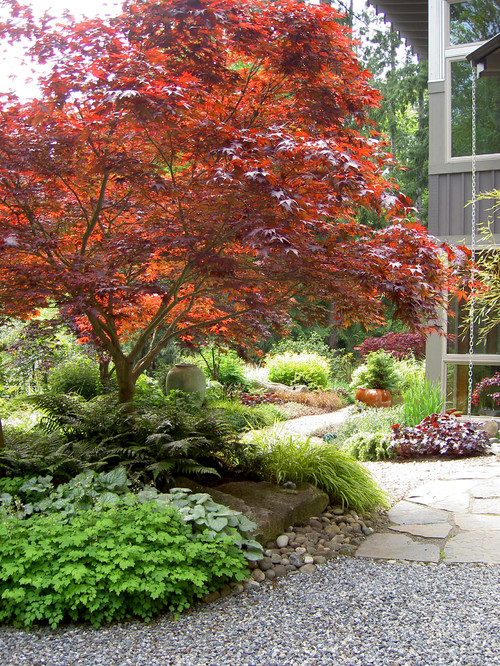Your garden is your oasis, the place where a great variety of flowers and plants are growing, but among them, there are many considered toxic for humans. However, we cannot speak about many cases of poisoning or death from garden plants. That is maybe, they have a very bad taste and it is hard to chew or swallow these plants.

Photo by Bliss Garden Design, LLC – Browse landscaping photos
Nevertheless, you should protect yourself and your family, especially the small children who can easily be attracted by these colored berry and flowers. In fact, the best protection is prevention. It is not necessary to remove these plants from your garden. However, they can have a great aesthetic effect. It is better to teach your little ones not to eat any part of these plants without an adult permission.
Toxicity:
These plants differ depending on their degree of toxicity. In addition, toxicity danger depends on dose. Some of these plants can cause serious health problems even death.
Poisoning:
Ingesting, inhalation of these plants or even direct contact can lead to poisoning.
Beautiful Gardens | How To Build A House (howtobuildahouseblog.com)
Correct Identification:
RHUS TREE
CHINESE PISTACHIO TREE
To prevent any unfortunately accident a correct identification is extremely important.
Why a correct identification is critical?
Because, many times poisonous plants can often be mistaken for ordinary plants. Maybe the most common example is the rhus tree (toxicodendron) which looks as a Chinese pistachio. Rhus tree is only one of the fifteen species of Toxicodendron. In North America we can find T.radicans (poison ivy) and T.diversilobum (poison oak). These toxicodendron species cause dermatitis through direct contact and the smog of burning rhus tree is extremely toxic.
This is one example how easy you can confuse ordinary garden plants with toxic ones.
There are many books where you can find the similarities and differences between the poisonous plants and ordinary garden plants. Also you can find the needed information online.


